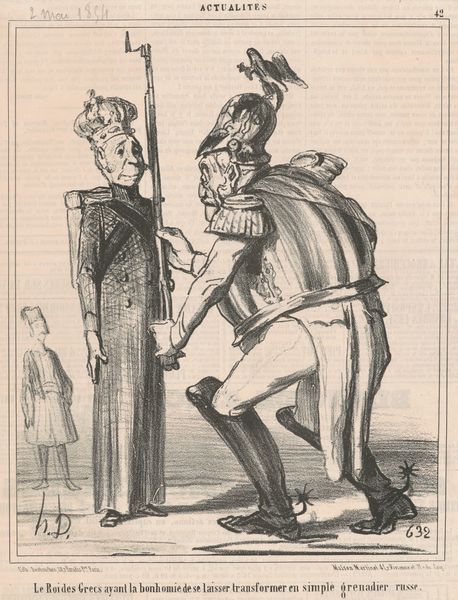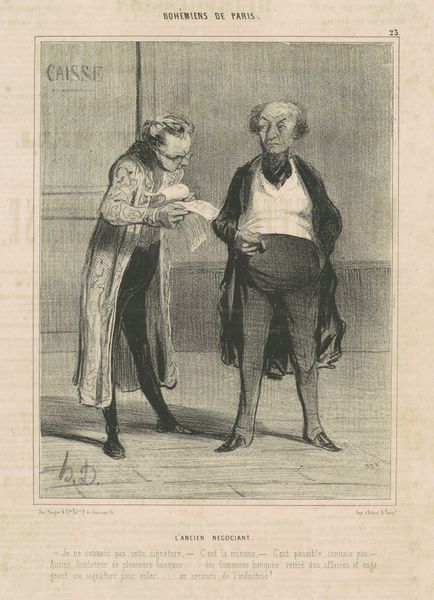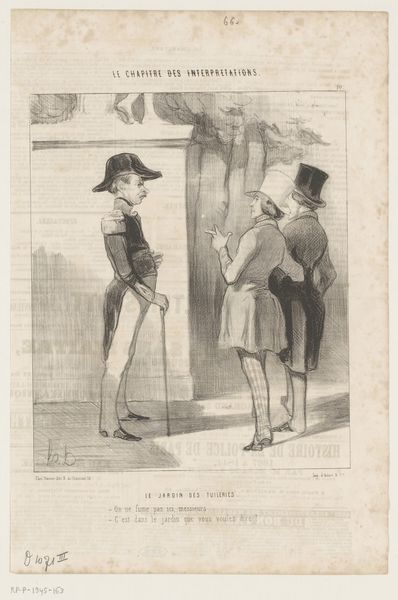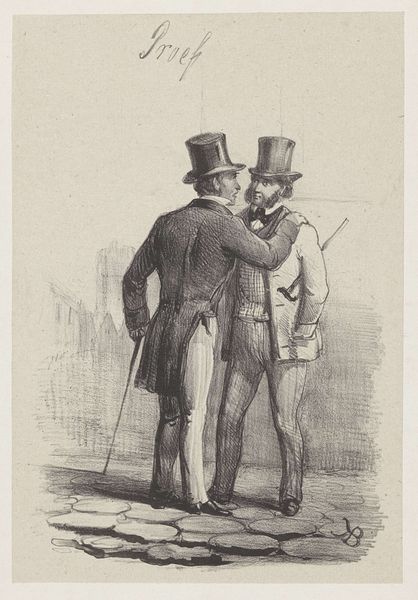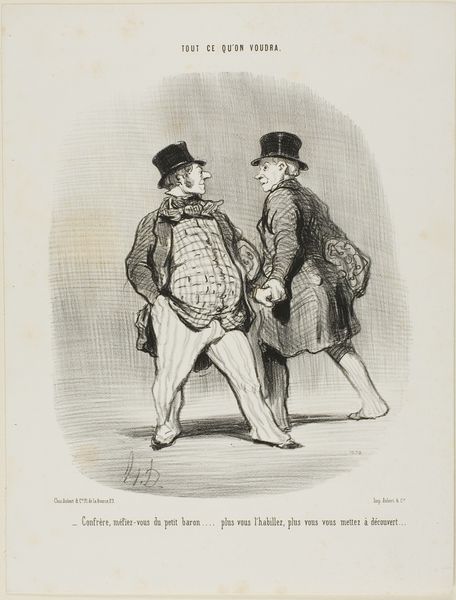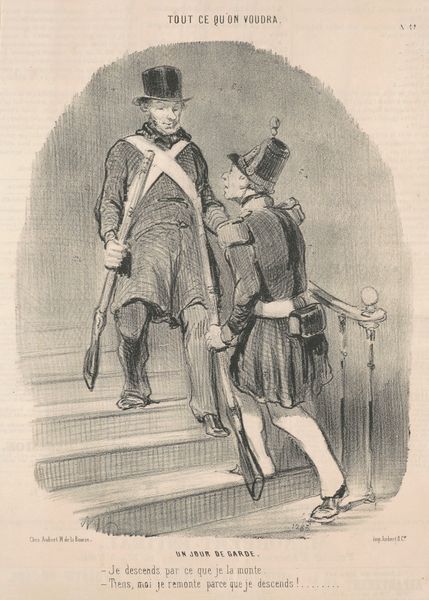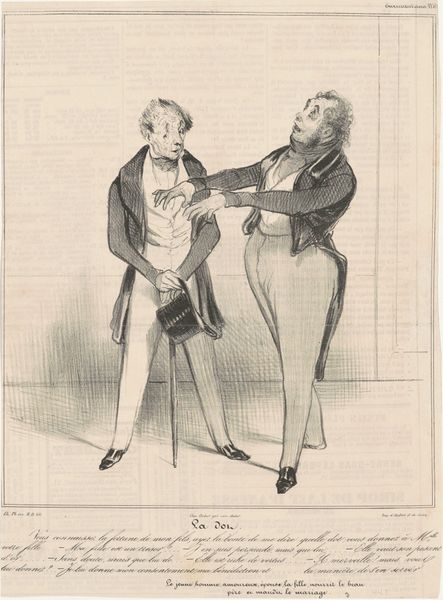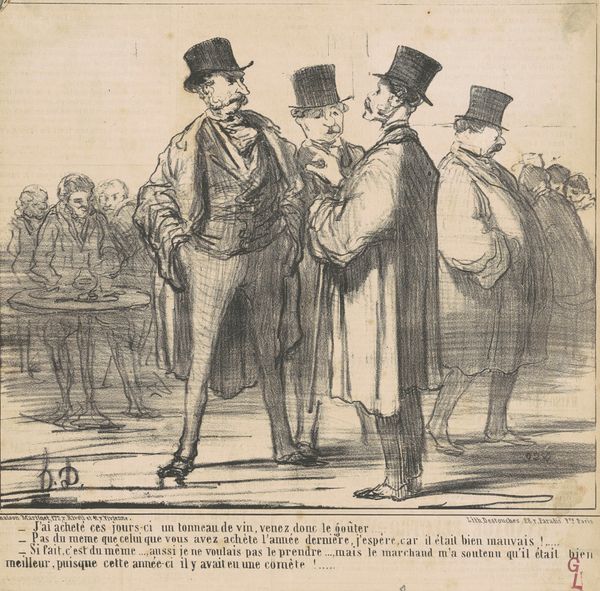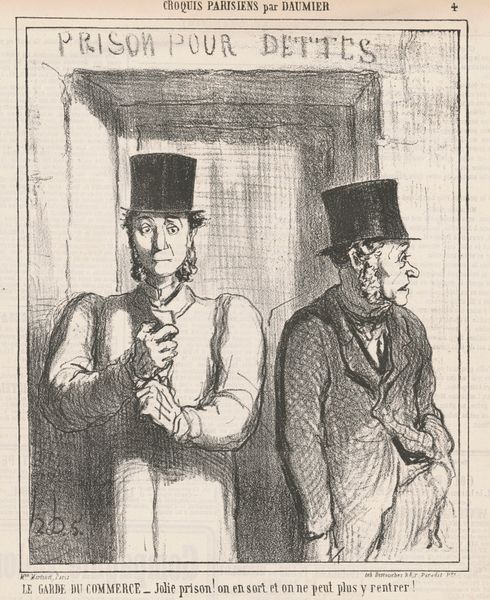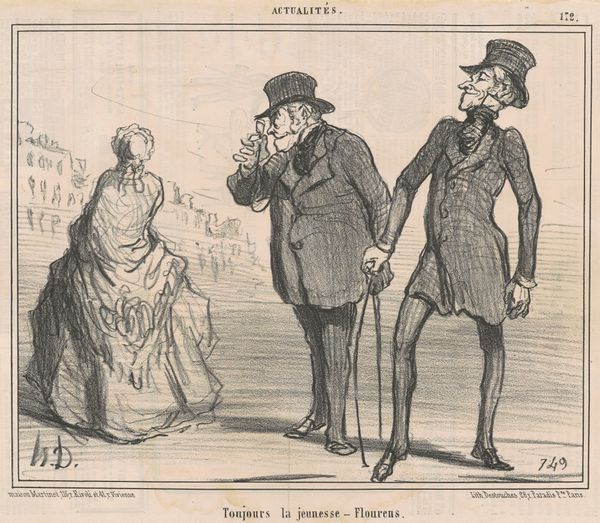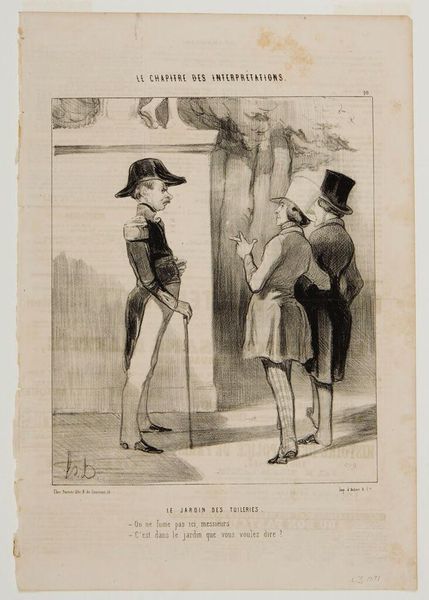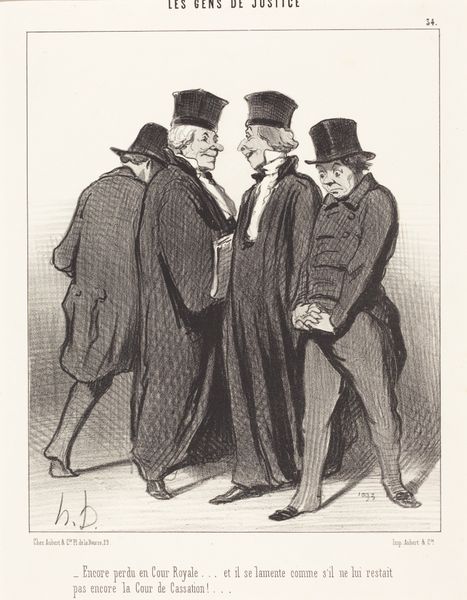
drawing, lithograph, print, paper, ink
#
drawing
#
lithograph
# print
#
caricature
#
paper
#
ink
#
romanticism
#
genre-painting
Copyright: National Gallery of Art: CC0 1.0
Curator: Let’s examine "Un alibi," a lithograph drawing from around the 19th century, crafted by Honoré Daumier. What catches your eye initially? Editor: There's an undeniable tension in the arrangement of these figures. They seem to crowd each other, almost overlapping. The artist's line work feels agitated, especially around their faces. Curator: Indeed. Daumier was a master of capturing social tensions through his art. This piece serves as social commentary. His work was politically charged. The characters here allude to class divisions. Editor: Looking at it purely from a design point of view, Daumier masterfully utilizes the stark contrast between light and shadow to emphasize the drama. Notice how the light delicately defines form. It lends to the characters an air of palpable nervousness. Curator: Absolutely. These nervous states underscore Daumier's broader criticism of 19th-century French society. The artist targeted social institutions through satirical lithographs. It’s like a captured snapshot of everyday encounters that actually serves to hold up the mirror to powerful social structures. Editor: But it's more than just subject matter. Notice how he achieves such a convincing depth and dimensionality with so few lines. There is a mastery there which surpasses the political scope. Daumier does employ a rather constrained tonal palette; nevertheless it proves highly effective in directing our gaze. Curator: And don't forget that these caricatures were created during a time of censorship and political upheaval. Each piece, beyond its formal qualities, served as an act of resistance, critiquing the bourgeoisie. Editor: The compressed, nearly claustrophobic staging undeniably bolsters the sensation of barely suppressed turbulence and anxious dialogue which underscores its appeal to period sensibilities steeped in romantic ideals even though we would hardly call this idyllic. The very economy of representation allows us to dwell on its socio-political context! Curator: Considering Daumier's use of print, one begins to consider the piece as an instrument for wider social change. He provided critiques that many could share and discuss. Editor: Thinking purely visually, its real success relies upon economy in composition. In that regard, "Un alibi" leaves a powerful, memorable imprint long past initial encounter.
Comments
No comments
Be the first to comment and join the conversation on the ultimate creative platform.
